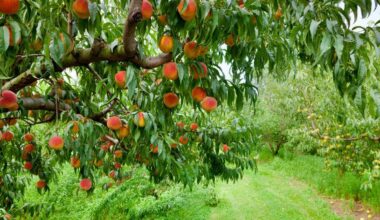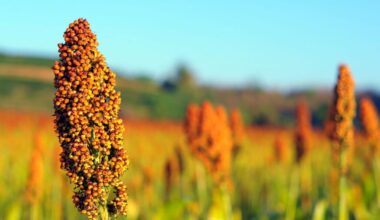Its leaf is the symbol of Canada, its syrup is very famous there: the maple is a tree with a majestic bearing. The bright colors of its autumn foliage do not make it go unnoticed in gardens: alone or in a group of trees.
The maple found in avenues and streets is the flat maple Acer platanoides or the sycamore maple Acer pseudoplatanus.
It is also an ideal tree for reforestation. Very imposing or bushy, depending on the variety, the maple will present a large crown or will form a low mass by spreading almost at ground level.
Contents
Where to plant the Japanese maple?
Maples like sun or half-shade, they also accept total shade. They ideally like acidic soils. They are heathland plants, just like azaleas, rhododendrons, camellias, magnolia, hydrangeas, piperis, heathers…
Never place it in a limestone soil and offer it absolutely freshness and a sheltered place. Make sure that your soil is permeable, otherwise it will not develop.
Install them preferably sheltered from the wind. The cold resistance of maples varies according to the cultivars (resulting from a horticultural selection). In general, Japanese maples are not afraid of frost. They can withstand temperatures of around -13°F.
Walls exposed to full sun and a southern exposure are not suitable! The leaves will quickly dry out and your maple will lose all its shine.
When to plant it ?
The Japanese maple is best planted in the fall. It can be planted throughout the year, but depending on the region, preference should be given to periods when it is not freezing and when it is not too hot and dry.
How to plant a maple tree ?
How to plant a maple in the ground?
Dig a hole big enough to hold three times the volume of the root ball. Place a good layer of coarse gravel or other draining material at the bottom of the hole. For an oriental maple, acidify the soil by adding 50% heather soil.
For other species, lighten and enrich the top soil with coarse sand and planting soil or well decomposed compost, for example. Also make sure the bottom is well drained. Take into account the mature size of the variety to space it sufficiently from other plantings.
In any case, don’t forget to stake it and water it well.
How to plant a maple in a pot?
For small varieties (Oriental maples), choose a large container or pot (34 inches in all directions and 23 inches high). Make sure it has holes in the bottom to drain off excess water.
Install a layer of coarse gravel at the bottom for drainage. Fill with a mixture of regular soil, potting soil and heather.
Don’t forget to stake and water.
Pruning and maintenance of maple trees
The maintenance of maples is very limited.
Maples in general do not tolerate drought, which causes their leaves to dry out and curl up. During the first 3 years following their planting, make regular water contributions (but without saturating the soil), and also afterwards in periods of prolonged drought. For shrubs grown in containers, watering should be regular, especially in summer.
A slightly thick spring mulching of the base helps to keep the soil cool in summer.
For small varieties like Japanese maples, mist the foliage at the end of the day during the hottest periods if your climate is not humid enough.
Except for some oriental varieties with variegated or golden foliage, maples prefer not too shady exposures.
For a young tree in the ground, add decomposed compost at the base of the tree every year. For an adult tree, it is not necessary. For a shrub grown in a container, apply a complete fertilizer every year in spring.
Pruning the maple tree
Pruning of installed maples is not necessary unless they are planted in hedges. Older trees may need pruning, but this is not common.
For small or medium oriental species, pruning can allow for better development and aesthetics. However, it should be limited and progressive so as not to damage the general silhouette and the foliage. For large European or American species, pruning of adult trees should also be limited.
When to prune ?
Prune preferably in autumn, in October-November, because the sap rises very early and abundantly in spring.
You can also do a light pruning in spring.
How to prune ?
For small or medium oriental species
- Prune the lowest branches.
- To maintain the shape of the crown, do not remove the taller branches.
- Remove the dead wood in the crown and prune lightly, either to aerate it or to make it denser.
- You can remove the few completely green branches that appear in the middle of the foliage of variegated varieties. But if you keep them, they will become as beautiful as the others as they age.
For large European or American species
- Simply remove any dead, broken or diseased branches.
- Cut them off either at the trunk or at the axil of a large branch above a bud facing outward from the branch. Do not leave a stump.
- For larger branches, first cut them off about 16 inches from the trunk, then carefully remove the snag without damaging the trunk bark.
Diseases and pests that affect maple
The Japanese maple is susceptible to mealy bugs, small brown insects found on the back of the leaves. To eliminate them, you can use their natural predator: Cryptolaemus. You can also use a solution based on black soap, water and methylated spirits to spray on these harmful mites.
Maples are also victims of a fungus attack: verticillium wilt. This fungus causes the leaves to wilt, turn yellow and eventually fall off. To stop the infection, remove diseased plants and thoroughly disinfect your tools.
Another enemy of Japanese maple is root rot. This disease is caused by very resistant underground fungi called armillaria. To limit the harmful effects of this disease, which causes the maple to dry out completely, it is best to first remove and burn the affected parts of the tree, including the roots.
Armillaria spreads easily through the soil, so remove the contaminated soil to a depth of 20 inches. Leave the hole in the open air for a year, as this fungus does not tolerate air and light. Avoid replanting a new tree in the same location where an infection occurred.
Multiplying the Japanese maple
Cutting
Cutting Japanese maple is relatively complex to do. June is the ideal month for this operation.
- Select tender herbaceous cuttings, leaving at least 2 groups of leaves.
- Immediately immerse your maple cutting in water, the slightest dehydration can lead to poor rooting.
- Recut the bottom of the cutting for a better adhesion of the cutting hormone.
- At the level of the substrate, add peat mixed with perlite.
- Take your cutting out of the water, dip it in the cutting hormone and put it immediately in the ground.
- The cutting must be done in a smothered environment, under a plastic, or a tunnel.
- The rooting of your cutting requires 8 to 10 weeks.
- If the rooting is successful, new shoots will appear.
- Put the young shoots obtained in a pot and wait 2 to 3 years before putting them in the ground.









